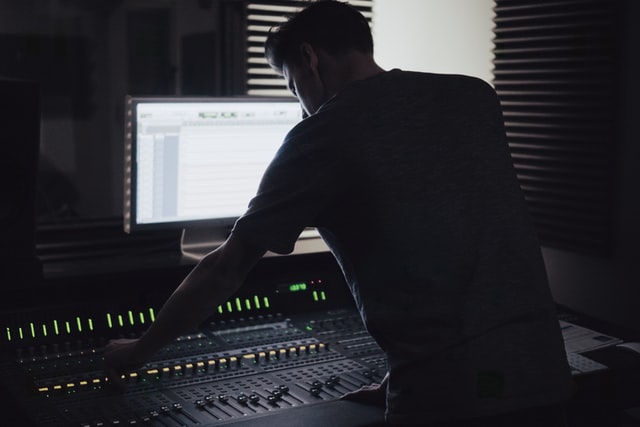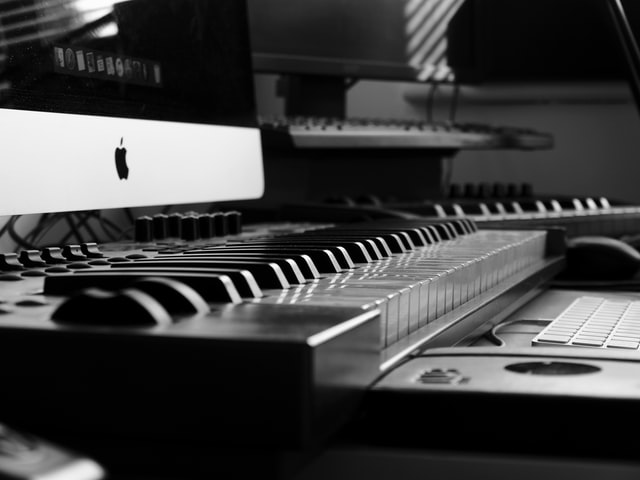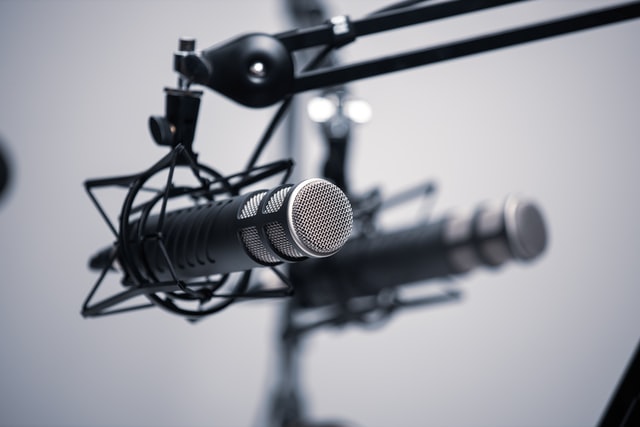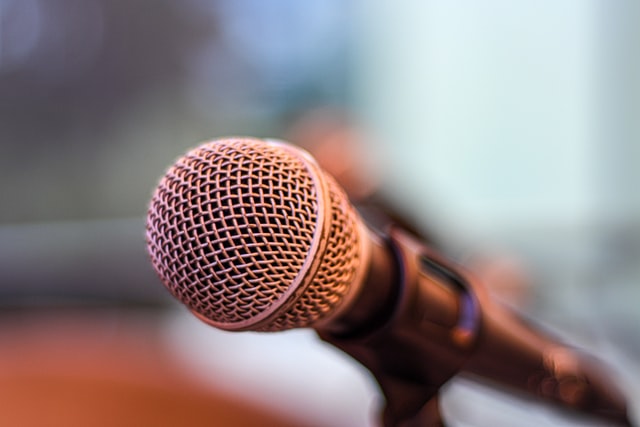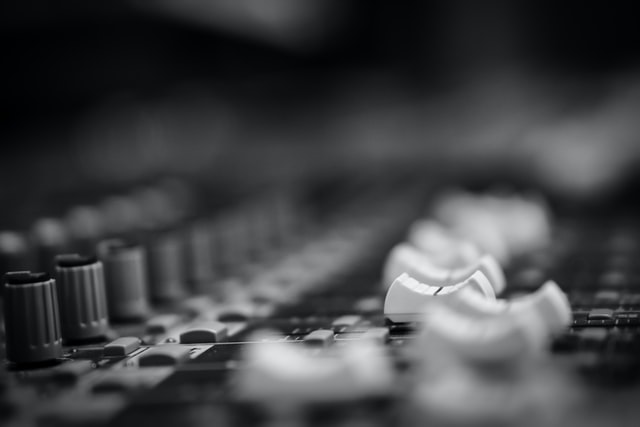How to record piano? Most piano players will, at some point ask this question. There are loads of different reasons to record the piano. Whether you want to create the next number one album or you are just looking to listen back to your practice in case you have made some errors, one of the best skills to learn as a budding piano player (once you’ve mastered the basics of playing) is how to record piano.
This guide looks at some of the reasons why you might wish to record, the different methods you can use and some of the best ideas for getting a good quality recording.
Why Record Piano?
There are some obvious reasons why you might want to record playing your piano. This is not a skill reserved for aspiring record producers, and while it is a very helpful skill for those who do want to make a name for themselves in the industry, it can be useful for hobbyists and actually improves your playing.
To Share With Others
This is one of the top reasons for learning how to record piano to a good standard. We can share our playing in all sorts of ways that weren’t possible years ago. Instead of having to wait until you were in someone’s company to show them a new idea, you can now record ideas and share them virtually instantly. You can email an idea for a new song to a bandmate in no time at all.
You might not have others in the same band to share with, but being able to upload and email over your songs and practices can have other uses. You can send it for feedback, either on the web on forums and on social media, but also to tutors or other piano players. This is a good way for them to show you whether or not you are getting things right!
To Be Self-Critical
While you are playing, it can be hard to focus on the areas you can improve. You will be too busy reading music, trying to remember things or even composing and experimenting. Record your practice and you might find that it is much easier to hear areas of potential improvement.
This applies whether you are learning how to play other peoples’ songs or you are writing your own. Being able to listen back to your playing is one way to pick out ideas you like and those you don’t. Some people simply improvise and play lots of new ideas in a session, before listening back and working out which they might keep and which need to be discarded. If you have a commute, or long periods of time when you can listen to your playing then this can be the perfect time to work out which ideas you like.
To Release
A lot of people who are looking into guides on how to record piano are ambitious to release their own music. That could be anything from a live performance that you release, to your own set of compositions. You might want to record a solo concerto or you might have ambitions of learning to make your own music by layering, and adding vocals and other instruments over the top of the piano.
We live in the age of the DIY musician. In theory, the possibilities are endless. You could write and record an album as well as release it on global platforms without ever having to leave the house.
If you have ambitions of recording your piano playing in order to release it in the future then the tips in this guide can help to get you started. There are a lot of skills you will need to learn about such as EQ, layering and mastering before you can create something worthy of release, but the tips below will get you well on your way.
Recording Equipment – How to Record Piano With Minimal Equipment
We’re assuming you don’t live in a recording studio! There’s a lot that you will need to learn about equipment and you might have to order some new items, especially if you want a professional-level recording.
It is worth considering the fact that if you just need a basic recording to share an idea or show someone your playing, your phone might even be up to the standard needed. Modern iPhones and Android phones are often made with decent-quality microphones for making rough recordings. You won’t be able to record a number one album on them without some extra equipment, but it is amazing what your mobile device can do.
Most of us will use a computer or laptop as the central point of our recordings. Here is some of the equipment and software we recommend checking out before making any recordings:
A Digital Audio Workstation (DAW)
This is the software you will want to record your music into. A lot of people have access to a DAW already – GarageBand is included in iPhones, iPads and MacBooks. It is relatively simple to set up GarageBand for making recordings, as described in this guide. You don’t have to be an engineer to get to grips with the basics of a DAW. If you don’t have an Apple device then you can look to other software. Audacity is a free DAW and Reaper allows you an evaluation license while you get to grips with it.
A USB-MIDI Connection
If you play a digital piano or have a keyboard with a USB output then you can often use this to record MIDI. Recording MIDI is different from recording audio, as you are effectively recording information, and the DAW or a virtual instrument triggers the sound itself.
Acoustic pianos will not give you the option for a USB-MIDI connection but if you do have a method of playing via a keyboard or digital piano, MIDI recording is arguably easier. As you are not recording via a microphone and you are effectively just transferring data, there is a lot less to get wrong.
A Microphone (or Two)
For acoustic musicians, and also for some people playing digital pianos, a microphone is essential for recording the audio from your instrument. Though you can connect in other ways from digital pianos, acoustic pianos simply don’t give you this choice.
If you have ambitions of singing or recording other instruments, too, the microphone can be an essential piece of equipment. Fortunately, microphones are cheaper than they have ever been and there s so much competition on the market for cheap yet quality mics.
Will USB mics cut it? For amateur recordings and those wanting to get started by recording some of their practicing then a USB mic can be a fantastic solution. It cuts down on the amount of equipment you need, and some hit songs have even been made using a USB mic to record the vocals.
Types of microphone include dynamic and condenser microphones. We won’t go too in-depth on the differences, but a condenser microphone tends to be more sensitive and record more detail. A dynamic microphone is more rugged and these are great for use in live settings where the microphone might take a bit of a beating.
A USB Interface or Mixer
If you don’t want to use a USB microphone you need some way of converting the audio signal of an XLR microphone into a signal the computer and DAW can understand. This is where an audio interface or a mixer will come in. This is another item to buy and something else to learn how to use, so you can see why some people bypass this by using USB recording.
USB interfaces do often have the benefit of being able to use multiple inputs so you can record with more than one microphone. For example, you can record the piano and vocals at the same time from different mics.
Mic Positioning
If you are recording with a microphone, the position of that microphone is vital to getting a high-quality recording.
If you are recording an acoustic piano then you should record from above in the center of the piano. If you can, around 8 inches from the strings (where the sound is generated) will help you to get a clear recording. If you record in other areas of the instrument then you might find that unwanted noise such as the sound of the pedals or the keys being played will be picked up.
For more information about positioning microphones to record from an acoustic piano, this guide from MXL mics might be helpful.
Recording a digital piano with a microphone is a bit of an unusual thing to do, but it does happen. Most of these instruments have the ability to take a direct output from the piano. If you would rather use the microphone, though, you can place it around 6-8 inches from the speaker of the digital piano. This might not result in high-fidelity recordings, but you can still achieve decent recordings to send to bandmates, for example.
Recording Without a Microphone
A microphone takes an audio signal and turns it into an electrical signal. If you have a keyboard or a digital piano, this electrical signal is made within the instrument and you don’t need to use a microphone.
You can use an audio output, such as a line out or even a headphone output. This audio signal can be sent via an instrument cable to an audio interface, and recorded as if through a microphone.
The above video explains how you can use an audio interface to take high-quality recordings from your keyboard or digital piano.
Recording MIDI
We’ve already mentioned this briefly, but MIDI is an incredibly powerful tool. Even if you are recording audio, you should try and record the MIDI as well, if you are playing a digital piano with the capacity to do so.
The MIDI signal is just a recording of the controls, of which notes are being played when. This information can then be fed through a virtual instrument so that the notes can be triggered by other instruments. For example, you could then feed this through a synthesizer, or through a virtual instrument piano, which can give you a lot of different sound options.
The video below shows a lot of different options for piano sounds that can be used on your computer.
There are some amazing factors that make MIDI recordings a great option:
- You can record MIDI in conjunction with audio recordings, and then blend the two together or assign new sounds to the MIDI notes.
- You can edit MIDI. If you hit a bum note, you can delete the note via MIDI, making it as if that note was never hit. You can also add more notes or make alterations to what has been played.
- MIDI files are tiny and easy to share, if you have producer friends, they will probably love being sent MIDI files as they are sort of a blank canvas for them to add instruments to.
- MIDI recordings may require virtually no equipment. Some digital pianos and keyboards come with a USB-MIDI cable, so you can record without ever having to buy extra equipment. If you already have a laptop then the setup can be incredibly simple.
Top Tip – Record Piano From Multiple Sources
If you speak to an audio engineer they will tell you that the more material they have to work with, the better.
As you can see from all of the methods we’ve discussed above, there are lots of different ways of getting an audio signal, especially if you are using a digital piano or keyboard. This means that you should look to get as many sources as you can. If possible, record three or four different audio sources.
You might be recording the audio from a line out, audio from a microphone and MIDI through a cable all at once. This means that if one recording fails, for example, you will have plenty of opportunities for other audio sources. Plus, it might be that the strongest sound comes from a blend of the sources above. You might combine your MIDI, run through a virtual instrument, with the sound of your piano from a microphone.
If you are recording an acoustic piano, try to set up multiple microphones. A mixer, or a recording interface with multiple inputs will allow you to do this. With more audio sources, you will have far more options for the sound.
Once again, all of this depends on what you plan to use the recording for. If you are going to use the recording commercially and want to use it in the final version of one of your compositions, do everything you can to get lots of high-quality recordings. Even if you don’t use them, it is best to have them.
The Recording Process
Time for the process. How do you make the recordings?
Firstly, connect the microphone, or connect the piano to the laptop, keyboard or device in some other way in order to make the recording. This will be different depending on which recording device you are using, so be sure to follow the tutorials that you will receive when you get your microphone, or find an example setup on YouTube.
Next, you need to get your DAW set up. This means that you may have to go into settings or preferences and alter the inputs and outputs. Make sure that the DAW is connecting to the microphone or USB interface and that audio is coming in. You might have multiple channels to set up, which can get more complicated. Again, this is not something we can go into detail with as each DAW is different, but there are plenty of tutorials out there.
Once you have done this, and you know the audio is coming into your DAW, you should check the levels. They need to be loud enough to hear clearly but with no risk of clipping or peaking. This is a form of distortion that sounds horrible on recordings. You will want to ensure no clipping, and if your volume levels are going too high then this will be indicated by a red flashing light on the interface or within the DAW.
You may also want to set up headphones for monitoring, so that you can hear the audio as it is coming into the DAW.
Finally, it’s time to hit record on a practice recording. Just tinker with a few chords or play a section of the song to check everything is in good working order and not distorting.
Then it is time to record your song!
Top tips for recording:
- Always do multiple takes, you never know which one will be used and which will come out better, plus you have more to edit when it is time to come up with the final version.
- If you mess up, just start again! It does not matter how many times you need to record a song in order to get it right.
- Set the tempo of the song beforehand if you are good at playing in time with a click track. The metronome playing can help you to stay in time and this means that it will be much easier if you plan to add things in the future.
- Organize your recordings and give them names with a naming convention, you will be glad you did when you are trying to find a recording in a few months time.
Next Steps to Make Your Recording Sound Great
So, you know how to record piano – now what?
Once you have your recordings, it is time to have some fun. This is another aspect that you may wish to learn more about depending upon whether or not you want your recordings to be professional. If they are just a simple way to learn how to make recordings to send ideas back and forth or to listen back to practice sessions then you won’t need to do this. If you’re a budding bedroom producer, there are plenty of other skills that can give more of a professional sound.
EQ – EQ can allow you to cut or boost frequencies for a better overall sound. For example, you could find that cutting the bass frequencies allows for more of a clean and clear sound for melodies and chords.
Reverb – Reverb is great for putting your piano in a virtual “space” and giving the acoustics and reflections of a room. Even simple DAW reverbs can sound fantastic and turn your piano into a much more pronounced sound. It will also sound much more natural if you apply this to a recording taken directly from a digital piano.
Layering – Adding more sounds, harmonies, guitars and vocals can turn your piano playing into a full song. This is the way to get it ready for release and create something with a full and polished sound.
Panning – This allows you to use the left and right channels in order to give more space to your final mix and make sounds seem like they’re coming from one area of the stereo field.
There are loads of other effects and techniques. Once you delve into the world of bedroom producing, you are likely to find it really fun to experiment with these sounds and open up the unlimited options all producers have.
Summary
Recording and producing really is something of a rabbit hole. A lot of musicians find that they get sucked in and want to learn more and more about how they can make their playing sound fantastic.
You don’t have to be a budding producer in order to make decent recordings, though. Knowing how to record piano isn’t that complex. If you are looking to just make basic recordings then a very simple setup can be good enough, and it’s can be both simple and inexpensive.
There are many different ways to make recordings, and in some cases, it is more of an art than a science! The key is to dive in and start to understand how you can record your piano to good effect. Experiment, test and find what works for you.
